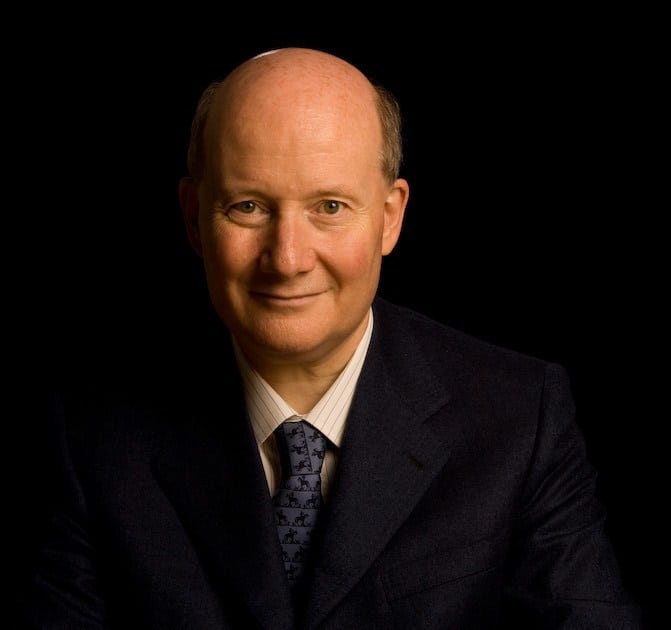The community’s teachings describe multiple levels of afterlife heavens and hells, and a coming New Era on Earth.
by Massimo Introvigne
Article 5 of 6. Read article 1, article 2, article 3, and article 4.

Eschatology—the study of last things—is often framed in terms of judgment, apocalypse, or divine intervention. In Lifechanyuan, however, it takes on a different tone: one of cosmic architecture, spiritual refinement, and progressive transformation. The community’s vision of the afterlife and the future of Earth is expansive, detailed, and surprisingly optimistic.
Guide Xuefeng spent time with the Jehovah’s Witnesses, whose theology also includes the vision of a future pacified Earth. While there are similarities, Lifechanyuan’s eschatology is more layered and ambitious in its scope of going beyond the traditional religious narratives.
Guide Xuefeng proposes a cartography of the afterlife that includes multiple heavens and hells, each with distinct characteristics and functions. Heaven is not a singular realm but a system of ascending worlds.
The Thousand-year World is a material celestial body located “nine hundred and sixty light years from Earth.” It is “about ten times the size of Earth” and inhabited by “approximately two hundred million Celestial beings.” Life spans here “about a thousand years relative to Earth time.” It is described as “a world of pure sincerity, kindness, and beauty; one of love, peace, pleasure, and where human nature is sublimated.”
The Ten-thousand-year World lies “three thousand, four hundred and eighty light years from Earth,” is “sixteen times the size of Earth,” and is surrounded by “sixteen equidistant suns.” Celestial beings here live for “about thirty-five thousand years relative to Earth time.”
Unlike the Thousand and Ten-thousand-year Worlds, the Celestial Islands Continent of the Elysium World is not material. It is the highest and most sacred realm, described as “the Greatest Creator’s backyard,” composed of “eighty billion islands, each the size of Earth.” Each island is inhabited by a single Super Celestial Being, though “fifty billion islands are not currently inhabited” and are reserved for those who ascend through spiritual cultivation.
These heavens are not exclusive to Lifechanyuan members. Other virtuous individuals may also enter, though members believe their path offers more precise guidance. Lifechanyuan does believe in reincarnation. Beings in the Thousand—and Ten-thousand-year Worlds may return to Earth to gain merit and ascend further. From the Celestial Islands, reincarnation is rare and only undertaken for missions benefiting humanity.
Hell, too, is structured. It is “the general term for inflamed space, frozen space, and the inferno.” Souls in hell do not reincarnate directly as humans. They may first return as animals or certain plants to repay karmic debts. However, “insects and many plants belong to another reincarnation system of LIFE and will generally not reincarnate as humans.”
The ultimate goal is to reach the Celestial Islands realm of purity, solitude, and divine proximity. One member told me in Thailand, “We are not escaping Earth. We are refining ourselves to be worthy of the Creator’s Garden.”
While the Thousand-year World, also called Millennium, is a celestial heaven, Lifechanyuan envisions a millennial kingdom on Earth. From a scholarly perspective, this can be called, by borrowing the terminology of American scholar Catherine Wessinger, “progressive millennialism”—a belief that the world is gradually entering a new era of peace and unity, not through cataclysm but through transformation.
The movement sees its Second Homes as seeds of this future. Guide Xuefeng has proposed the establishment of hundreds of such communities worldwide as prototypes of the coming civilization.

“On the first day of 2018, humankind entered the New Era, namely, the Lifechanyuan Era. The symbol of this is that we have prepared a huge theoretical system for humanity to enter the New Era; we have obtained successful experience of resolving all problems in practice.”
The New Era is marked by social indicators: rising numbers of single people, increasing divorce rates, and more open visa policies. These are seen as signs of humanity shedding outdated structures.
“Families, states, political parties, and religions seem very strong, but even they will inevitably collapse when the wind of the New Era blows; nothing is indestructible.” The world will be unified in this future through gradual spiritual alignment.
“The whole of humanity can have only one government, one belief system, and one order… Only when all dharma, laws, and regulations are unified into the Greatest Creator’s will and all religions, beliefs, and schools of thought are unified into one uniform belief system, and the whole world becomes one family, people can hold the Oneness.”
Leadership will be entrusted to single individuals, who are seen as more selfless and less encumbered by familial ties. “Single people should be chosen as leaders in all regions. Single people are more selfless and open-minded, and they are less tied and troubled than those who have their own families.”

The New Era also brings changes to daily life and cultural practices. Lifechanyuan funeral ceremonies involve cremation and the scattering of ashes in nature. “This dispenses with the building of tombs, the keeping of ashes, the establishment of memorials, and all marks and traces of the deceased.”
Birthdays and religious days such as Christmas are no longer celebrated. Instead, only natural festivals are observed. “There are no celebrations or festivals related to gods, Buddhas, Celestial beings, people, states, political parties, religions, or militaries, including Christmas, Buddha’s Birthday, and so on.”
Gift-giving will be discouraged, and religious buildings will no longer be constructed. “In the New Era, churches, Buddhist temples, mosques, and Taoist abbeys will no longer be built.”
Interestingly, Jehovah’s Witnesses also reject birthday and Christmas celebrations, though their reasons differ. Lifechanyuan’s goal is to remove ego, hierarchy, and distraction—to live in harmony with nature and the Creator’s will.
Lifechanyuan’s eschatology is not apocalyptic, although it does predict that evildoers will perish in wars and natural calamities and will not enter the New Era. Heaven is not a distant reward, but a destination mapped in stages. Earth is not a fallen world—it is a garden being replanted.
One member told me in Thailand, “We are building heaven here, and preparing to enter it there.”

Massimo Introvigne (born June 14, 1955 in Rome) is an Italian sociologist of religions. He is the founder and managing director of the Center for Studies on New Religions (CESNUR), an international network of scholars who study new religious movements. Introvigne is the author of some 70 books and more than 100 articles in the field of sociology of religion. He was the main author of the Enciclopedia delle religioni in Italia (Encyclopedia of Religions in Italy). He is a member of the editorial board for the Interdisciplinary Journal of Research on Religion and of the executive board of University of California Press’ Nova Religio. From January 5 to December 31, 2011, he has served as the “Representative on combating racism, xenophobia and discrimination, with a special focus on discrimination against Christians and members of other religions” of the Organization for Security and Co-operation in Europe (OSCE). From 2012 to 2015 he served as chairperson of the Observatory of Religious Liberty, instituted by the Italian Ministry of Foreign Affairs in order to monitor problems of religious liberty on a worldwide scale.




